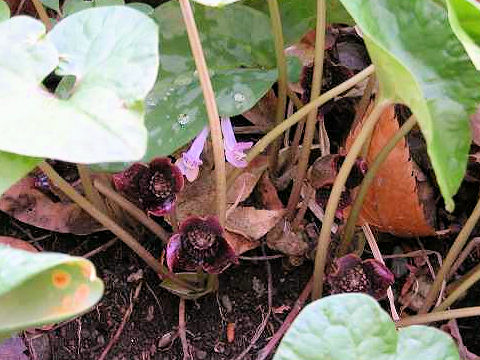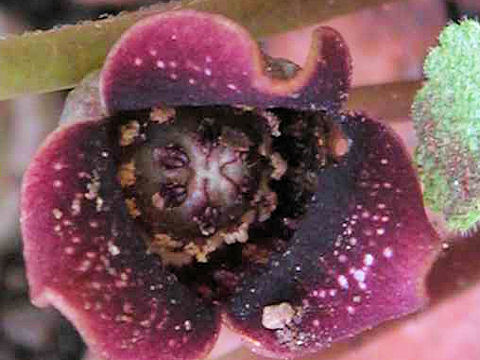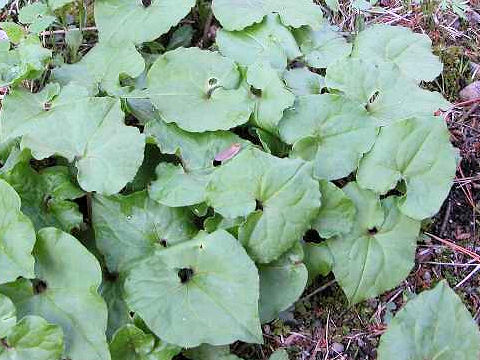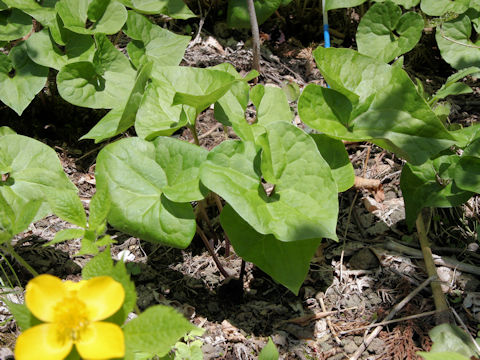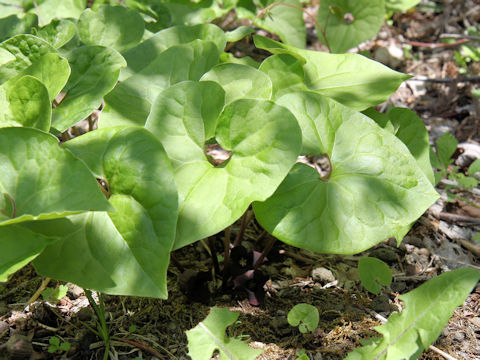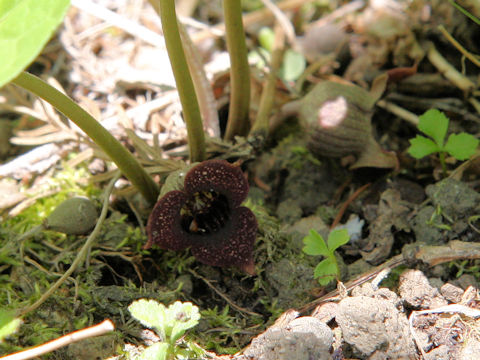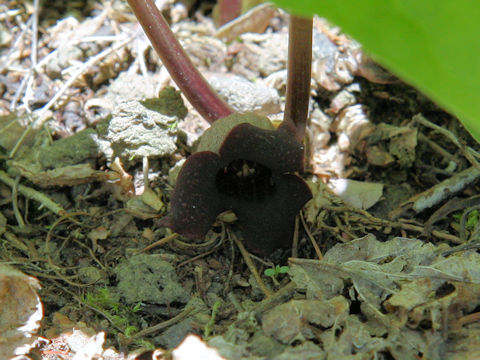
|
The "Usuba-saishin" (Asarum sieboldii) belongs to Aristolochiaceae (the Birthwort family). It is a perennial herb that is native from southern Kanto district to Chubu district and Chugoku district of Honshu in Japan, as well as the Korean peninsula and eastern China. This herb grows in wet montane forest floors and can reach 10-15 cm in height. The leaves are heart-shaped and opposite with long petioles. The short peduncles are borne on the axiles and bloom blackish-brown flowers from March to May. The 6 pistiles and 12 stamens are aranged in the calyx tube. The root has a pungent taste and is called "saishin" in Chinese medicine. It is used for pain relief, cough suppressants, expectorants, and diuretics. In Chinese, it is called "漢城細辛" (han cheng xi xin). Traditionally considered "Usuba-saishin" in the northern Kanto to Tohoku regions of Honshu, it was divided into a new species in 2007 as "Togoku-saishin".
|
